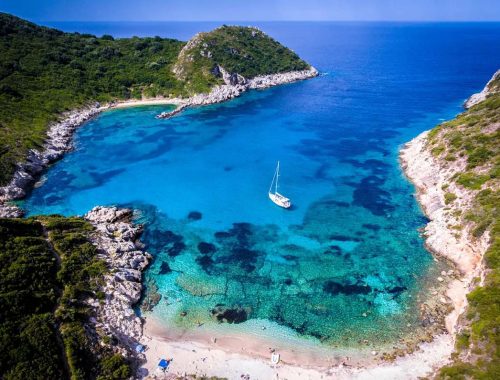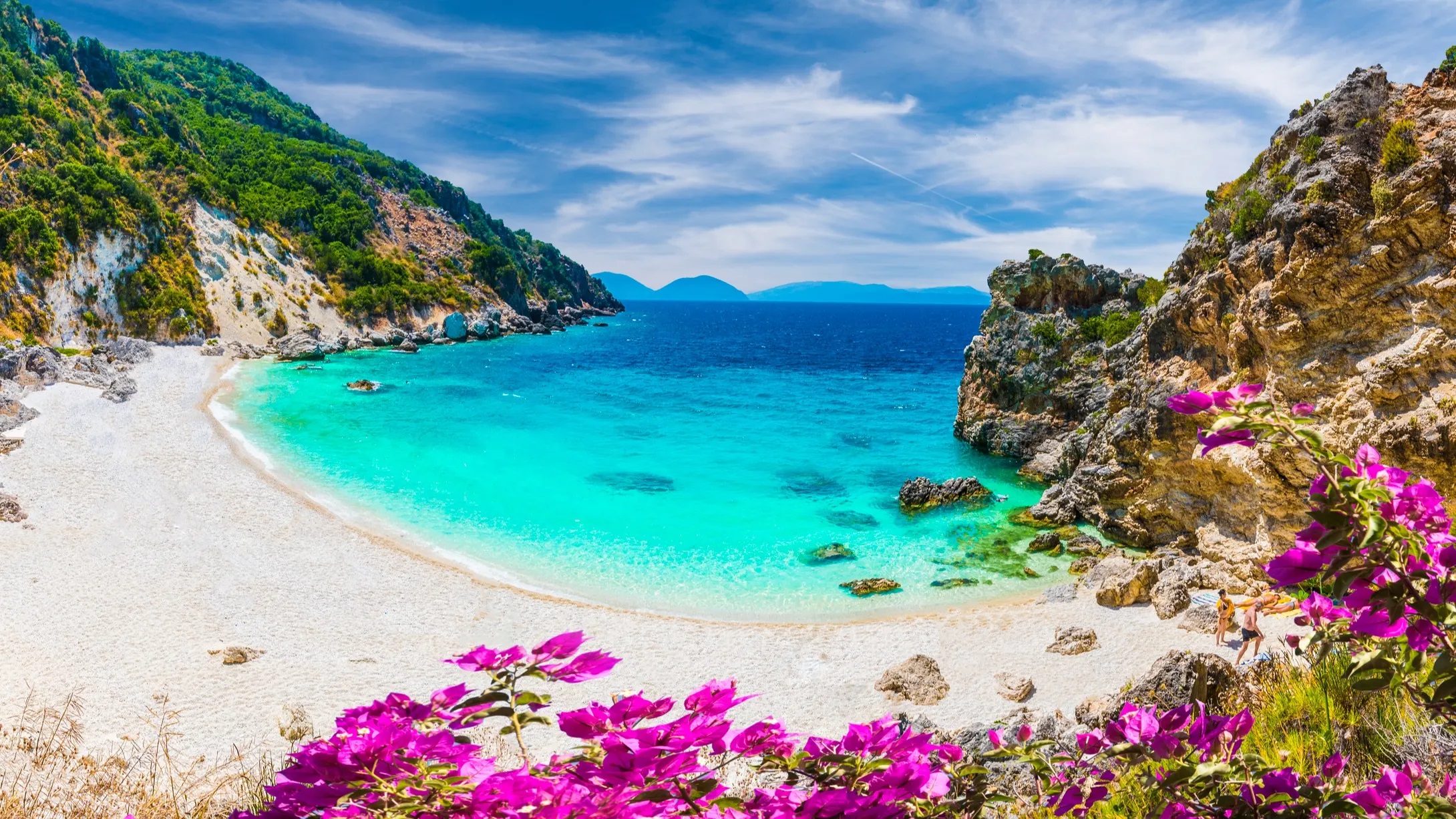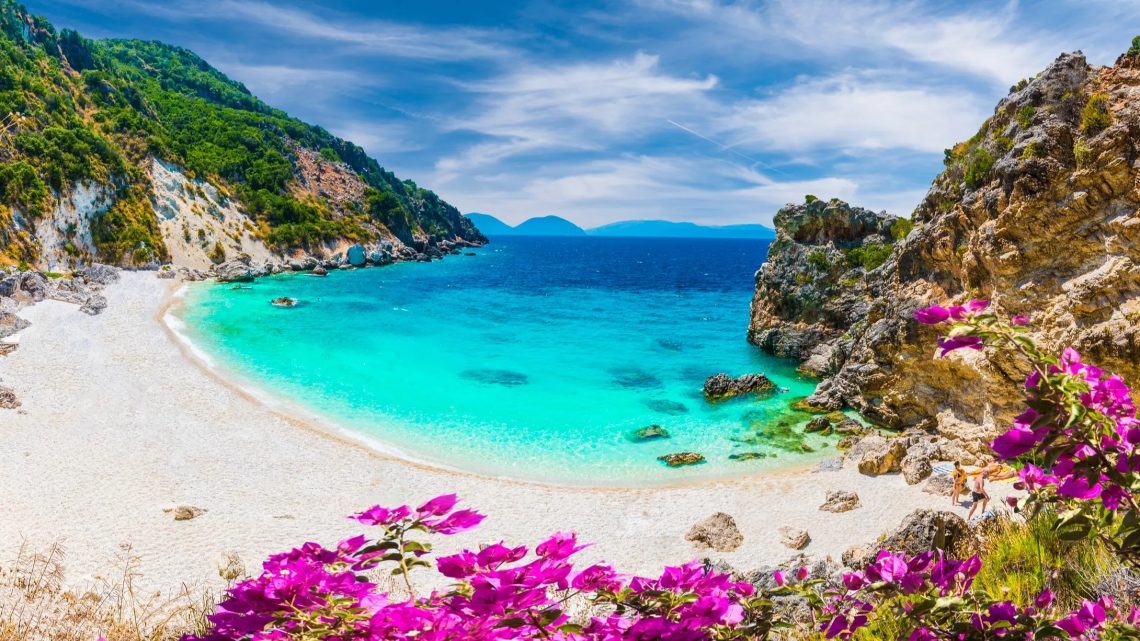
Ionian Greece, breathtaking islands in a sea ideal for beginners
When one thinks of Greece, the Aegean Sea often comes to mind, swept by the gusts of the powerful Meltemi winds, especially during the summer season. However, there is a part of Greece much calmer in terms of sea and weather conditions, yet equally captivating from a naturalistic point of view and rich in breathtaking islands.
We are talking about the Ionian Greece, the area facing the Ionian Sea. This is a destination well-suited even for those embarking on their first sailing holiday. Navigating these waters offers unique emotions and allows you to explore islands of boundless beauty, such as Ithaca, Kefalonia, Lefkada and Meganisi. All these places, with their rich history, warm local hospitality and majestic landscapes, will undoubtedly find a special place in your heart. So, let’s set off on a 7-day itinerary starting from the port of Preveza.
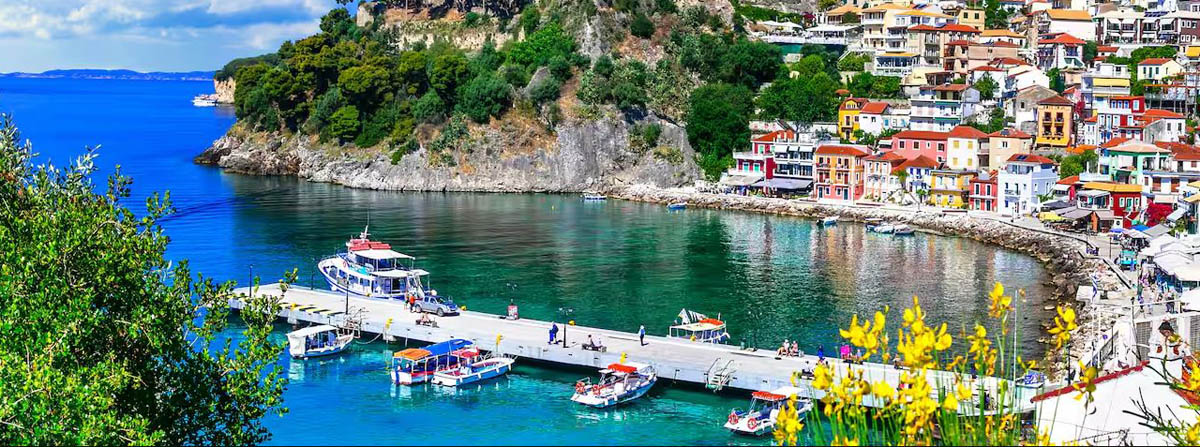
Day 1, Preveza, embarkation
Our starting point for exploring the Ionian Greece is Preveza, a splendid seaside city with a long and rich history of dominations that saw the succession of Ottomans, Greeks, Venetians, Italians and Germans. After completing the boarding process, you can visit the historic center with its maze of picturesque streets and narrow alleys, where you’ll find fashionable boutiques, local craft shops, bars frequented by locals,and many traditional taverns. Here, you’ll also find one of the city’s symbols: the Church of Aghios Charalambos with its Clock Tower, featuring typical Venetian architecture.
The city boasts six castles, including the Pantocrator Castle, which offers a breathtaking view of the Ionian Sea. There’s also the Aghios Andreas Castle, the largest, and the Aghios Giorgos Castle. The Preveza promenade is a beautiful walking area where you can admire numerous boats and yachts on one side and a variety of bars and taverns on the other. You can also marvel at the old Preveza Lighthouse here. Among the must-see beaches in Preveza is Monolithi, which stretches 21 kilometers, making it the longest beach in all of Greece.

Day 2, Preveza – Kefalonia, 25 miles
We set sail to reach Kefalonia, the largest island of the Ionian Islands, home to a beautiful National Park established in 1962, which hosts rare species of plants, orchids and fir trees, along with wild horses. The island’s peculiarity lies in its curious natural formations known as ‘katavóthres.’ These are sinkholes located north of Argostoli, on the tip of the promontory that extends into the gulf of the same name. In Greek, the name literally means ‘swallowing holes,’ as these cavities strangely draw in the sea. Another must-see spot is the underground lake of Melissani, located north of the town of Sami. It sits in a cave 39 meters deep and its turquoise waters are connected by tunnels to sinkholes 15 km away on the other side of the island.
The island’s three most beautiful beaches are Makrys Gialos and Platys Gialos, near the town of Lassi in the southwest of the island, and Myrtos Beach, about 15 miles from Argostoli. Finally, the small village of Assos is worth a visit. You’ll be enchanted by the charm of this fishing village with its colorful, flower-filled houses, while on the hill, the ruins of an ancient Venetian castle offer a splendid view on the village and the bay from its summit.

Day 3, Kefalonia – Itaka, 15 miles
Let’s set sail again for Itaka, a place that evokes a world rich with literary and mythological allusions for navigators. This Greek island is, in fact, the mythical homeland of Odysseus, the hero sung by Homer in the Odyssey, along with his long journey by sea—the ancient prototype for all voyages to come. But Itaka is also a magnificent natural destination, with numerous bays where one can anchor, timeless fishing villages, and an inland area waiting to be explored. In the northwestern part lies the village of Stavros, overlooking the beautiful Polis Bay and the channel that separates it from Kefalonia. A must-see is the Archaeological Museum of Stavros, which houses all the objects and ceramics unearthed during excavations in the Loizos Cave, a site that, in ancient times, was dedicated to the worship of Odysseus and the Nymphs. On the eastern side lies the village of Kioni, nestled in a lush and naturally beautiful area, featuring a small and peaceful beach. Further north, you’ll find the splendid coastal village of Frikes, with a lovely beach, a charming small port, and two windmills.
In the southern part of Itaka stands Perachori, built on a hill with a stunning sea view. In the village, it’s worth visiting the Church of Kimisis Theotokou, with its Byzantine frescoes and a wooden iconostasis brought here from Agios Raphael. The ruins of the island’s ancient capital, the medieval Paleochora, can also be found here, featuring imposing defensive architecture, stone houses and Byzantine churches. Still in the south but on the western coast are the villages of Lefki and Agios Ioannis, with the wonderful Aspros Gialos beach.
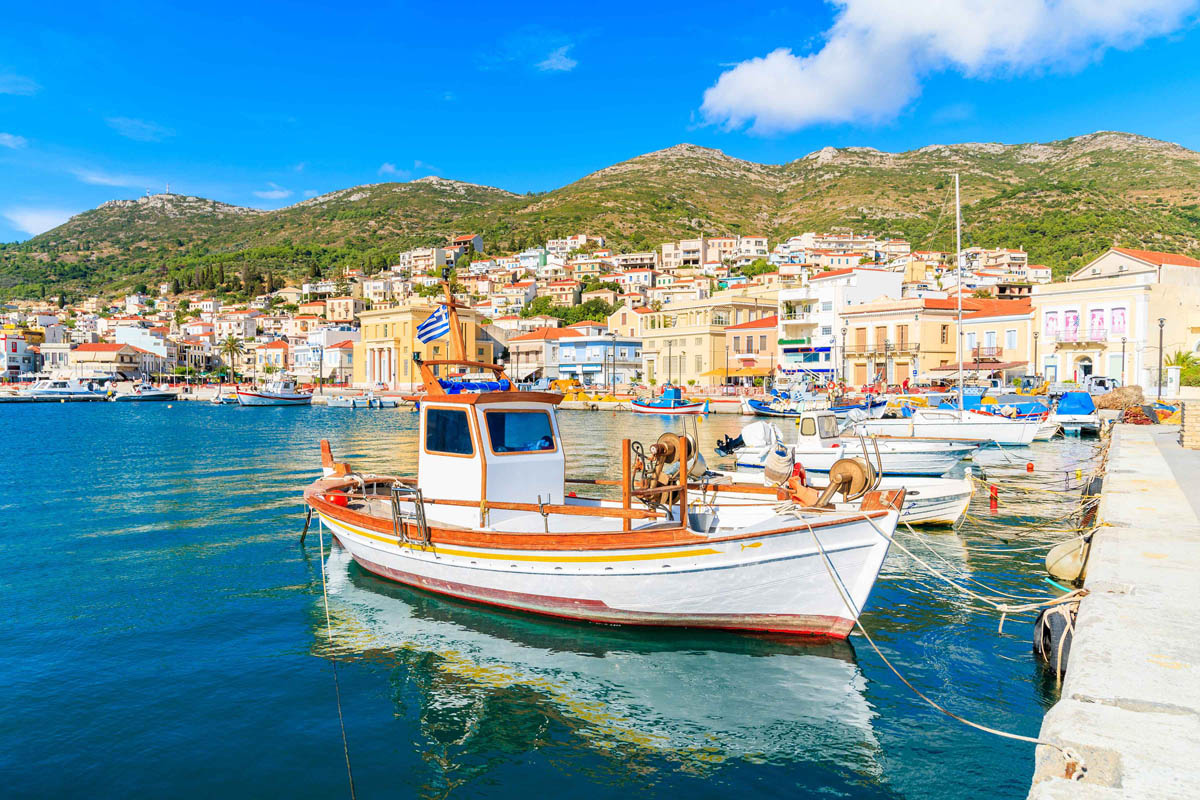
Day 4, Itaka – Vathi, 10 miles
We move to Vathy, the main port of Itaka, which, along with the town of the same name, is located at the end of a wide, naturally sheltered inlet shaped like a “mushroom.” The bay, open to the northwest, offers good shelter from northern winds but is subject to strong gusts, especially near its entrance. Boats typically moor at the west dock, which has around 20 berths where you can tie up stern or bow, using an anchor dropped onto a seabed of algae and mud about 3.5-4 meters deep, which provides decent holding.
Once the boat is secured, you can disembark and explore the small town built around a deep bay, protected by a narrow entrance, with the ruins of a fortress built by the French in 1807 visible on both sides. Walking through its alleys, you’ll notice the Church of Saint George and the Cathedral of the Virgin. Also worth visiting are the Archaeological Museum and the Museum of Culture and Folklore. Don’t miss the birthplace of Odysseas Androutsos, a Greek patriot and hero of the War of Independence, as well as the homes of writer Grivas Karavias and Platon Drakoulis, one of Greece’s early socialists. Just a mile west of Vathy is the Cave of the Nymphs, where, according to mythology, the Naiads, nymphs of rivers and freshwater, were worshiped.
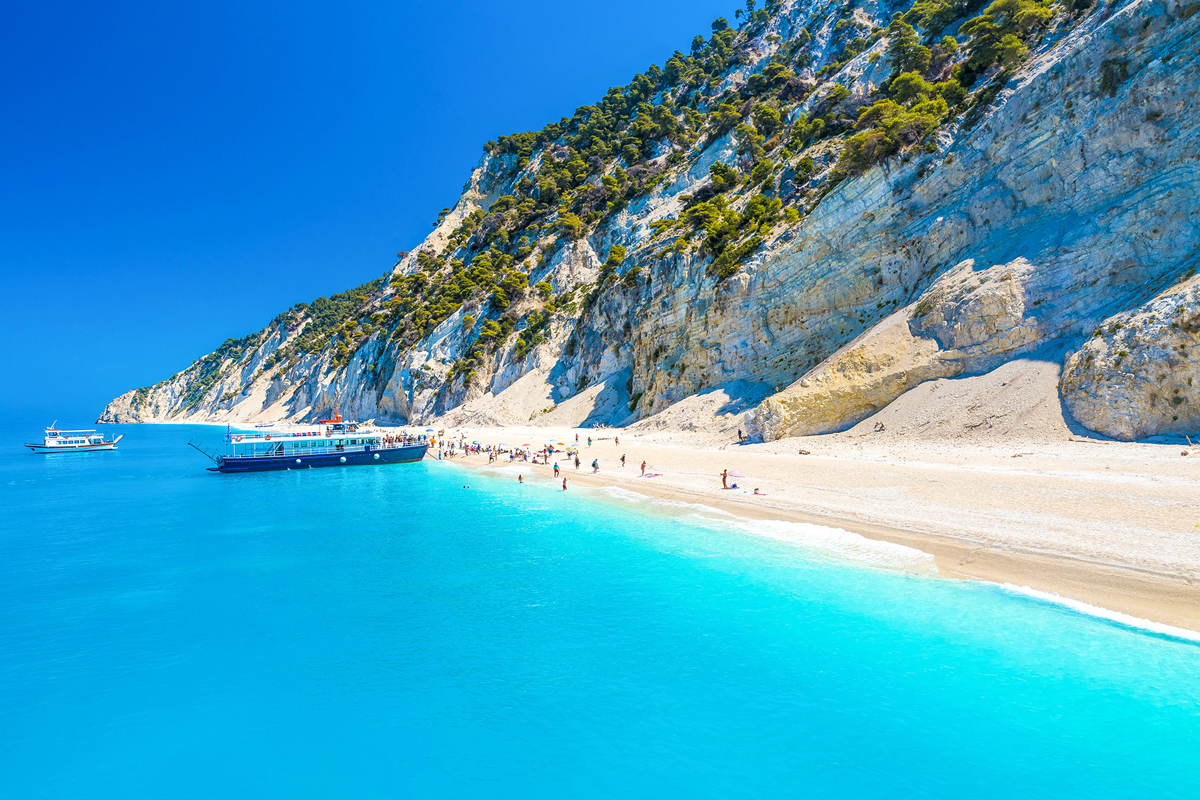
Day 5, Vathi – Lefkas, 20 miles
Today’s destination is Lefkada, a stunning island that combines turquoise waters, pristine beaches and lush greenery. It is located between Corfu and Kefalonia and is connected to mainland Greece by a movable bridge about 50 meters long. Lefkada was mentioned by Homer due to the legend tied to its cliffs towering over the sea, a place once dedicated to the sacrifice of lovers. According to the story, the poetess Sappho met her death by plunging from these white rock cliffs.
The capital and main port is the city of Lefkada, which stretches along the beach facing the coasts of mainland Greece. Its picturesque charm comes from the colorful houses with tiled roofs, beautiful squares, narrow streets and the lively seafront promenade. Other noteworthy places to visit include the village of Vasiliki and Nydri. Vasiliki is a natural bay, known as the island’s top spot for windsurfing and a bustling hub for surfers. Nydri, on the other hand, is a now cosmopolitan village, home to the busiest port on the island. It’s a prime destination for excursions and outdoor activities, with olive groves and lush vegetation framing a breathtaking view of the nearby islets. Among the must-visit beaches are the stunning Porto Katsiki, with its crystal-clear sapphire waters, Mikros Yalos, with its sparkling pebbles, and Syvota, nestled at the end of a beautiful fjord.
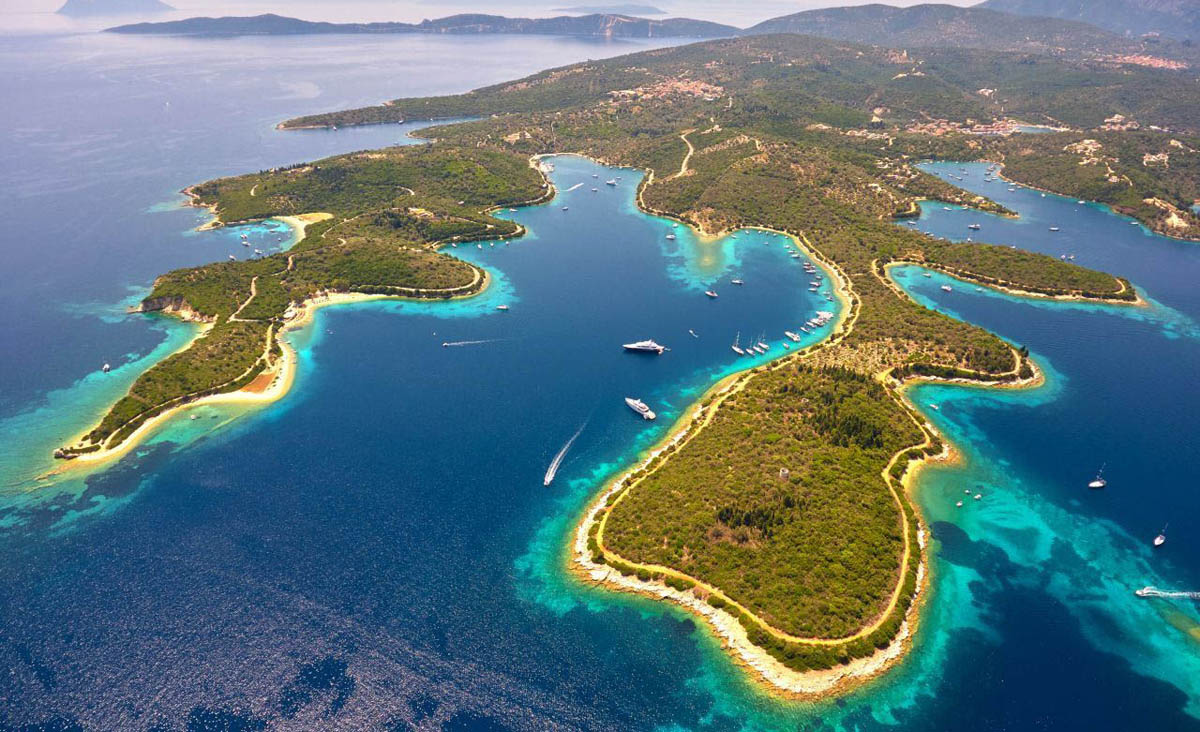
Day 6, Lefkas – Meganisi, 10 miles
At this point in our cruise through the Ionian Greece, we set course for Meganisi, located between Lefkas and the Greek mainland, right next to the island of Skorpios. Its coastline is dotted with small fjord-shaped beaches and pristine, secluded bays. You can dock at the natural harbor of Spilia in Spartochori for a stopover. On the northern side of Meganisi, there are several natural bays surrounded by lush Ionian landscapes. On the southeast side, you’ll find several caves, including the most notable one, Papanikolis. It is named after the submarine “Papanikolis,” which was used in World War II. Swimming in the cave is a unique experience as the crystal-clear waters allow you to see all the way to the bottom. Moreover, looking up, you can admire the stalactites hanging from the ceiling. You can swim to the small sandy beach inside the cave and take in the magnificent view. However, its deep waters and rocky bottom won’t allow you to drop anchor.
Also interesting are the island of Thilia, protected from the northwest winds, Atherinos Bay, a favorite destination even for locals, and Abelakia, where you’ll find some typical Greek taverns for lunch after a swim. For those who love privacy, off the southern coast of Meganisi lies the small islet of Kithros, where at most two boats can anchor on an 8-meter-deep seabed.
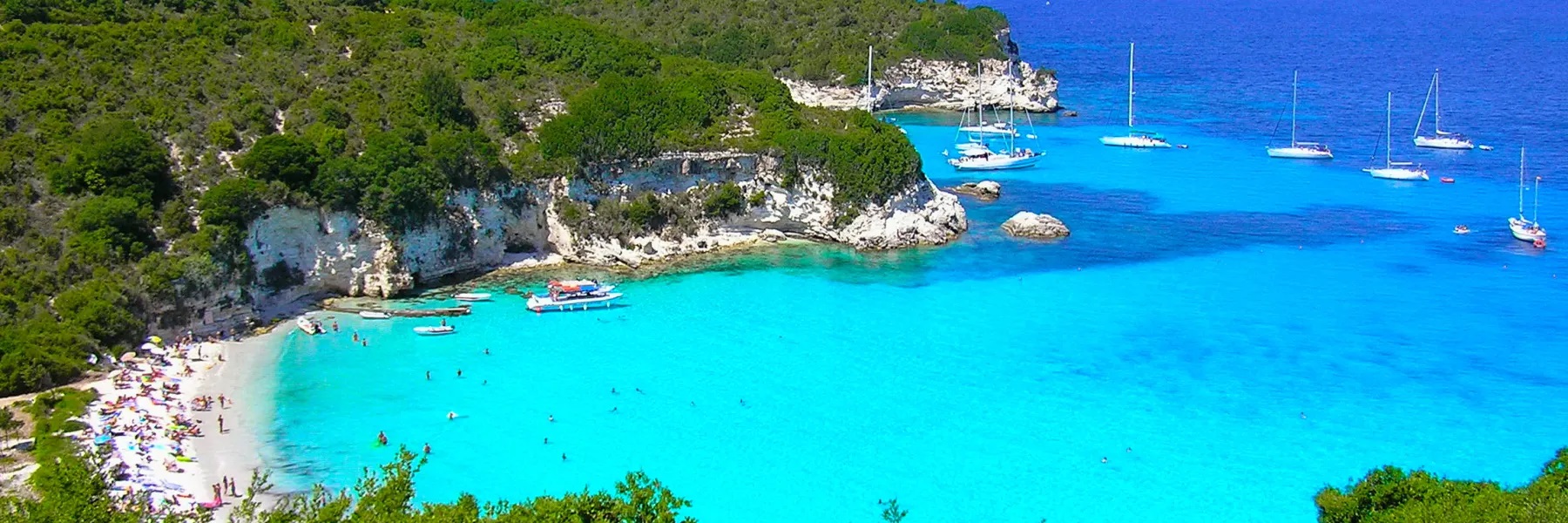
Day 7, Meganisi – Preveza, 40 miles
On this final day of our cruise exploring the Ionian Greece, we return to our starting base in Preveza, once again enjoying a pleasant sail in complete relaxation and safety through the Ionian waters. An incredibly calm sea, ideal for family crews and rich in extraordinary beauty.
You May Also Like
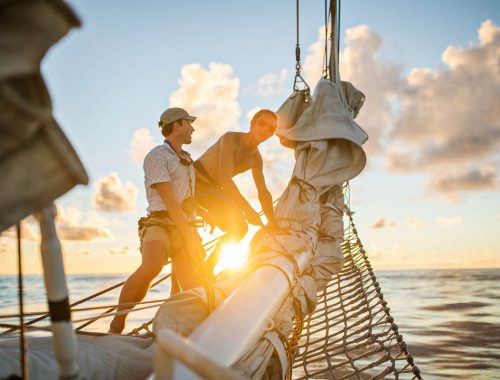
How to build a dream crew for your sailing cruise
04/12/2025
Discovering Menorca by sail – an island of peace, greenery and wind
21/02/2023